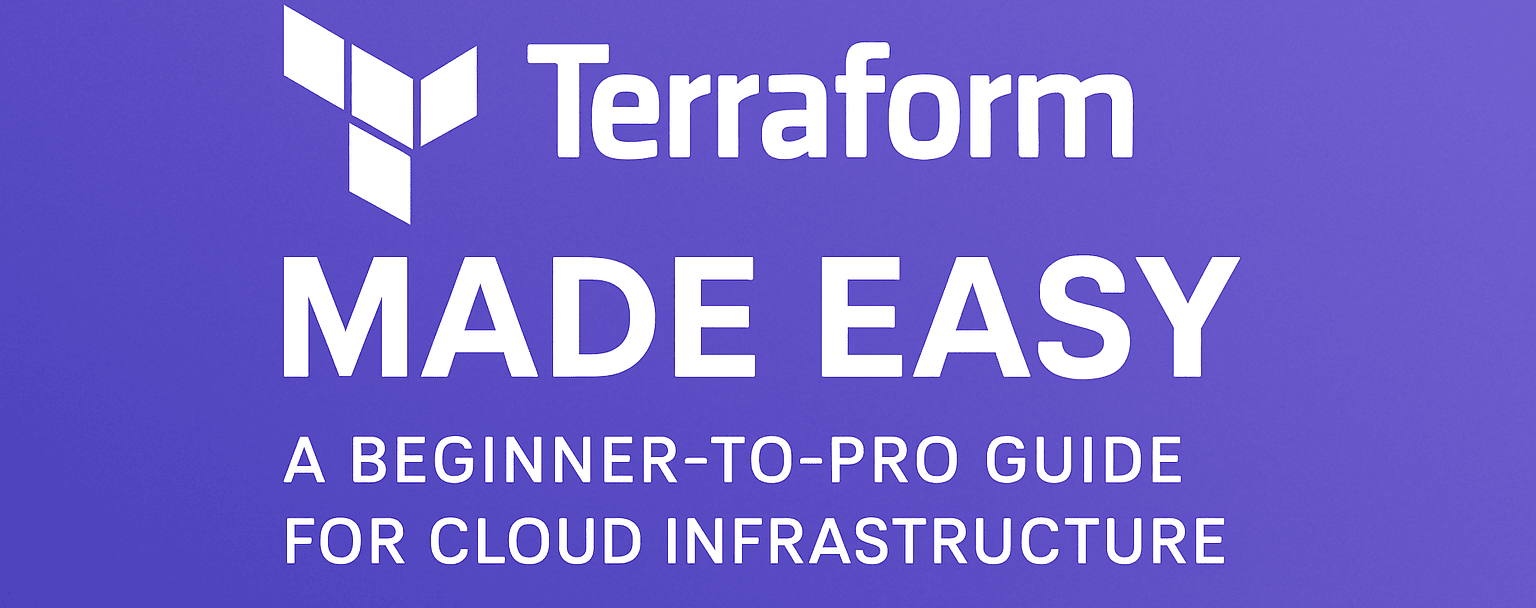
Terraform Made Easy: A Beginner-to-Pro Guide for Cloud Infrastructure
🚀 Introduction
Cloud infrastructure can be complex—but it doesn’t have to be. Whether you’re a student just starting out or a seasoned DevOps engineer, Terraform offers a powerful, elegant way to manage infrastructure as code. In this guide, we’ll break down Terraform from the ground up, with practical examples and pro tips to help you build better cloud systems.
🌍 What is Terraform?
Terraform is an open-source Infrastructure as Code (IaC) tool created by HashiCorp. It lets you define cloud and on-prem resources using a declarative language called HCL (HashiCorp Configuration Language).
Imagine writing a recipe for your cloud setup. Once written, you can recreate the same environment anywhere, anytime—with just a few commands.
🧠 Why Use Terraform?
- Consistency: Infrastructure is version-controlled and reproducible.
- Multi-cloud support: Works with AWS, Azure, GCP, Kubernetes, and more.
- Scalability: Easily manage thousands of resources.
- Collaboration: Teams can work together using shared state and modules.
🧩 Core Concepts
🔌 Providers
Providers are plugins that connect Terraform to cloud platforms or services.
provider "aws" {
region = "us-east-1"
}
Popular providers include:
-
AWS
-
Azure
-
Google Cloud
-
Kubernetes
-
Docker
🏗️ Resources
Resources are the building blocks—like virtual machines, databases, or storage buckets.
resource "aws_instance" "web" {
ami = "ami-0c55b159cbfafe1f0"
instance_type = "t2.micro"
}
📦 Modules
Modules are reusable sets of Terraform configurations. They help you organize and scale your infrastructure.
module "vpc" {
source = "terraform-aws-modules/vpc/aws"
version = "3.0.0"
}
📜 State Management
Terraform tracks infrastructure in a state file. This file tells Terraform what’s already deployed and what needs to change.
Local state: stored on your machine
Remote state: stored in S3, Azure Blob, etc. (recommended for teams)
🌐 Remote Backends
Remote backends allow multiple users to collaborate safely.
terraform {
backend "s3" {
bucket = "my-terraform-state"
key = "global/s3/terraform.tfstate"
region = "us-east-1"
}
}
🛡️ Best Practices
-
✅ Use modules to keep code DRY
-
✅ Lock provider versions
-
✅ Store state remotely
-
✅ Use terraform plan before apply
-
✅ Keep secrets out of code (use environment variables or secret managers)
⏱️ Quick Start: Terraform in 10 Minutes
-
Install Terraform Download Terraform
-
Initialize a project
terraform init
- Write a basic config
resource "null_resource" "example" {}
- Plan and apply
terraform plan
terraform apply
- Celebrate 🎉 You’ve just deployed infrastructure with code!
📣 Final Thoughts
Terraform is more than just a tool—it’s a mindset. By treating infrastructure as code, you unlock automation, scalability, and collaboration. Whether you’re launching a simple VM or orchestrating a multi-cloud architecture, Terraform makes it reproducible and elegant.
Ready to build smarter cloud infrastructure? Try Terraform today—and share this post with your team!